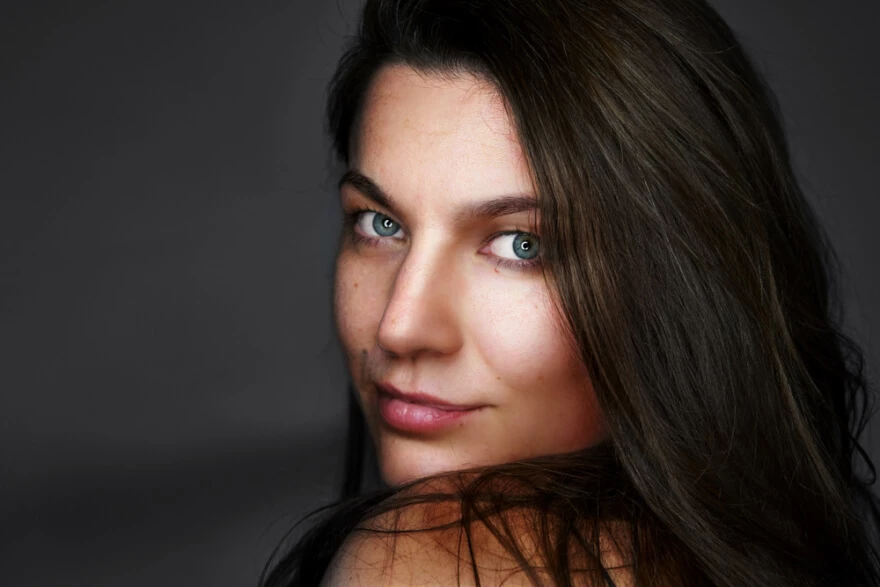Storytelling Photography

- Storytelling narrative photography ideas
- The main character
- The roots of storytelling photography
- The conflict
- Composition and shooting angle
- Dynamic
When we watch a movie or series, we rarely think about what makes us so intently watch what is happening on the screen.
The interest in the film is taken for granted. But if we review cinema production from the point of view of logic, if we disassemble it into parts, it becomes clear how certain elements capture our attention and make us feel emotions. The basis of any movie is the plot - a kind of story that gradually unfolds in the course of the film. The main character can attract us for his fame or charisma in general. But if in movies there is the possibility of dynamic storytelling with the help of constantly changing pictures and dialogues between the main characters. However, in storytelling photography, everything is a little different. But we still can reach out to some movie elements and apply them to the image. Let us break down what is storytelling photography.
Storytelling narrative photography ideas
Visual storytelling photography is a form of photography seen the usage to tell the story in a single frame. To be able to represent the story you need to use certain elements but the most important is the idea of your narrative.
The main character
To get photography storytelling ideas, we need to understand what we want to talk about. One day a friend sent me a photo like this.
I wondered what this photo is about? A friend began to tell me about how did they have a great vacation with friends in nature, admiring the beautiful landscapes and how they grilled kebabs there. I replied that the image here is not giving a hint about that even. This photo is just about the beauty of nature and that is it. There is no other meaning or any strong emotion as supposed because it has not got any storytelling elements inside. Usually, such a photo is not very interesting to look at, especially if it was not shot with any compositional tricks or color adjustments. But how would we fix an issue like this? There is one simple rule if you want the photo to become more interesting for the viewer that is just including the main character in it, about whom the story will be told. Starting from that moment your picture will turn into a story that will be interesting for the viewer to consider instead of being just an ordinary shot of the boring reality. You should be wondering about what exactly you want to convey with your photograph.
For example, if you want to talk about your journey, such a shot with the inclusion of the main character will be more informative. That will catch the eye of the viewer and allow him to think about how the character ended up there and what is he doing up there.

Including the main character is a good way of storytelling through photography but sometimes you want to take a shot of nature and make it unique the same way.
If you want to tell the story of the beauty of nature, then you should make your character impersonal, thereby riveting the sights to the landscapes in the background.

As you can see in the photo there is still the main character exists but just with his back turned to us. Thus, there is no way to distract the viewer from the observation of this amazing landscape. The presence of the main character in this frame allows the viewer to associate himself better with this place by virtually transferring him to what is happening in the photo. Moreover, adding a main character makes your photo unique and unlike the thousands of other photos that tourists would usually take in the same place.
The roots of storytelling photography
Some of storytelling photography ideas have been achieved long before such a term as photography. This is how many artists did it by creating their drawings.
The main character in your photo does not have to be any person. The main thing is that we need this subject to be an embodiment of the present. This means that the main character can be represented as a car, an airplane, or even a ship.
Using the latter as an example, let us take a look at Aivazovsky's painting. If you are not familiar with the work of this artist, it will be useful to know that in his entire life he created more than three thousand canvases depicting the seascapes. And if you look closely at his works, you will notice that most of them contain a protagonist.

In this picture, we are not able to see people on the ship, but at the same time, we perceive this ship like an alive person, as the main character. Looking at such a picture, we are worried about how the ship will cope with the sea element, how it ended up in such a storm, and whether it managed to survive the night without crashing on the reefs. If this picture would not have the main character visualized as the ship, it would still remain beautiful, but at the same time, it would not cause such experiences and emotions, because there would be nothing to look at or worry about. By adding the main character, Aivazovsky allowed the viewer to develop the plot in his imagination, thereby this picture became storytelling.
Let's take a look at another painting by Aivazovsky

Here we already see people directly as the main characters who emphasize the calmness of the sea surface. The characters make the viewer look at this picture a little longer in order to examine them carefully and draw up a mental plot about who they are, what they do there, and how they ended up there.
If you shift this method of the main character inclusion from pictures to a photograph, then you can capture a fisherman on a boat who went fishing on the river at dawn.

Of course, it is not that easy to take a shot like this by a chance. Therefore, you need to prepare yourself to take the boat with you and the partner you will shoot floating on the boat by the river. Everything is like in a movie!
The conflict
Since we have an understanding of what is the essence of finding the main character in the single frame, now we can add even more storytelling specifics to your image and further emphasize the uniqueness of your photo.
As it is in the movies, storytelling through photography might contain a certain conflict. This does not have to be a picture of people trying to sort out their relationships or some image of actual war conflict. The picture can be quite capacious and does not contain alive objects at all. For example, a chessboard with a figure by each side, as shown in the picture.

Which side will win? If in the actual story we will know the answer in the end, the storytelling photography leaves us room for imagination. That is what makes the conflict the same as a good element as the main character itself by attracting the viewer.
Composition and shooting angle
Sometimes it seems very hard to make a unique photo. As we mentioned before it works the same as in the movies, where you have to prepare tools, props, get good weather and light conditions to take a good shot. But more often it takes just a little bit more effort to make your storytelling photos stand out from others. That way you can try to take a different angle of shooting, which opens up a better visual perspective. I remember there was a flight show with skydivers and the crowd was taking shots of those skydivers right before their landing. There was the same forest background for all, but couple hundred meters away there was a nice angle to take a unique shot.

If I were to choose, I would prefer this photo over others that are the same of a kind, and it does not take any actual effort to make your shot better than others just by taking a better angle.
Dynamic
Storytelling in photography probably reaches its limits when you are able to add some sort of motion to your frame. Sounds weird, we have only one single frame but motion means to have multiple frames.
Let us say you are at a sporting event. Let it be a Formula 1 race. Usually, people shoot cars as they are. But photos like this will surprise only a few people, except there would be an alien sitting behind the wheel.

However, you can add some visual dynamics to show the action.
Thus, the composition of our photo already consists not only of the main character driving the car, which is the plot, but also we have some dynamics that are more inherent in films, but we have these dynamics in a single frame. And on such a frame, the gaze will unconsciously stop much longer.

You can also add some visual motion blur effects like this in Photoshop but it is achievable with correct camera settings and shutter speed. Correct settings will allow your camera to focus on the moving object leaving the background to blur natural way. That adds a dynamic to the photo emphasizing the motion idea of the object.
Now we know what is the storytelling power of photography. Including a variety of elements and visual storytelling photography ideas on top, will provide the best viewing experience.
He started his career as a professional photo designer and retoucher. Professional commercial photographer with 20 years of experience. He is a leading advertising photographer and has worked as a food photographer with Michelin-starred chefs. His work with models can be seen on the calendars of many leading companies in Ukraine. He was the owner of the photo studio and photo school "Happy Duck".

with RetouchMe














